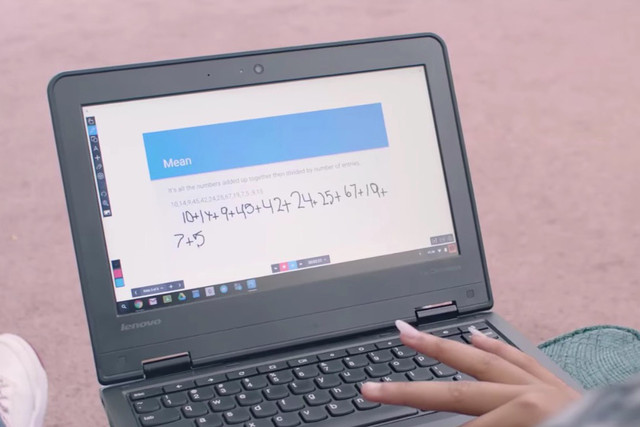
Now, that’s all changing. Between Microsoft’s efforts to target the educational market, and Google’s Chromebook initiative offering the lowest cost of entry, Apple has dropped to third place in the market, according to Futuresource Consulting.
Futuresource looked at mobile PC sales in the U.S. K-12 sector, which achieved 18-percent year-over-year growth in 2016 with 12.6 million units sold. The biggest story is Google’s Chromebook, which grabbed 58 percent of the market in 2016. That’s an increase from 50 percent in 2015, based on affordability, G Suite productivity tools, lower device management costs, and other factors. On a worldwide basis, Chromebook’s penetration is significantly lower, at only 6 percent in 2016.
Apple, on the other hand, saw its share of the market fall to 19 percent between iOS and MacOS devices. That’s down from 34 percent in 2014, and 25 percent in 2015. Globally, Apple’s share was at 11 percent in 2016, which is actually a slight increase from 2015’s share of 10 percent. Apple isn’t standing still, however, with a number of initiatives, including its Classroom app and education focus in iOS 9.3 leading the company’s efforts to turn things around.
For Microsoft’s part, its various education-focused programs, including Microsoft Classroom, School Data Sync, and low-cost Windows 10 machines aimed squarely at Chromebook, have allowed the company to maintain its second-place position at 22 percent of the market in 2016. Worldwide, Microsoft is dominant in K-12 education, at 65 percent of the market. Newer initiatives, such as the rumored Windows 10 Cloud edition and Microsoft’s rollout of InTune for Education to help combat Google’s Management Console, are aimed at building the company’s share of education going forward.
According to Futuresoft, the future of the education market is murky. “Microsoft has made huge strides in developing its education ecosystem offering in the past year, with major announcements on both the devices and platform side. To date, however, these developments have not stopped Google’s momentum within the U.S. K-12 market. Microsoft continues to face challenges to win back end-user mindshare.”
The future of the education market will include expanding use of 2-in-1 devices, where Microsoft’s Windows 10 is a particularly strong player. Whether Apple, Microsoft, or Google will dominate is unclear, but one thing is obvious: The education market is important to each of the companies, and they’re going to be fighting tooth and nail for their share of the business.



